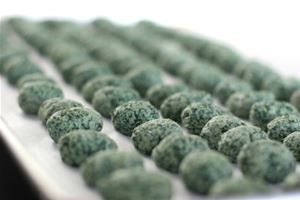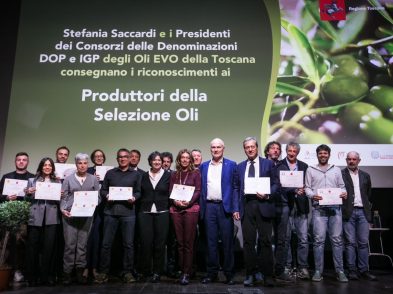Italian cuisine has an abundance of primi piatti, first courses, which are usually a starch, but in Tuscany, unlike elsewhere in Italy, more of the primi piatti are based on legumes and bread—such as zuppa di ceci, ribollita and pappa al pomodoro—and fewer on pasta.
Yet good-quality pasta is not only immensely satisfying to make—especially if it is made with a lot of love and good-quality water and flour—but it is also a great base for your sauce skills. And those pasta-based Tuscan primi piatti are particularly good for this time of year, when we are waiting out the last weeks of winter.

So, I am in a fresh pasta frenzy. Last night, I made tortelli di patate mugellani, silky-smooth potato-stuffed pillows that I serve with dried porcini dust and browned butter. A few days ago, I made pasta e ceci, served simply with wild rosemary and extra-virgin olive oil.
I recently made pici—long, hand-rolled strands of pasta that resemble a fatter, more rustic version of spaghetti, made only with warm water and flour—and tossed them in sautéed breadcrumbs with garlic and parsley, then topped them with grated parmesan and pecorino for pici e briciole. The week before, I prepared pappardelle al cinghiale with meat, supplied by a hunter friend, which I had saved in the freezer.
So, while you await the first signs of spring, here is a warming pasta dish, maccheroni al coniglio con finocchio (pasta with rabbit and fennel). Remember, in Tuscany, maccheroni isn’t an elbow-shaped hollow pasta: it is flat, roughly shaped sheets of pasta at least twice the width of pappardelle and about a quarter as long, and quite easy to make.
The pasta
300g flour, type ‘00’; 4 whole eggs
Sift the flour straight onto a marble slab, making it a mountain; make a well at the top like a volcano. Crack the whole eggs straight in, roll up your sleeves and start to break the yolks with your fingertips. Start to incorporate the flour into the eggs a bit at a time until they start running down the mountain, then use both hands—up to your elbows—and incorporate to make a soft dough. You will end up with a lot of pasta dough stuck to your hands, but this is part of the glorious pasta-making experience.
Let the dough rest for at least an hour, then roll it out finely into sheets with a rolling pin or empty wine bottle. Cut the pasta sheets into large irregular diamond shapes, known in Tuscany as maccheroni. Dust with extra flour and set aside until the rabbit sauce is ready.
Rabbit and fennel sauce
1 fresh saddle of rabbit; a little flour to dust the rabbit; salt and pepper, to taste; 1 red onion; 70g smoked pancetta; little pinch of zenzero (Tuscan chili); 2 cloves garlic; 1 sprig rosemary; 1 teaspoon dried fennel seeds; 1 glass of your favourite Chianti Classico; 100ml extra-virgin olive oil; Water to cover
Finely dice the red onion, salt and squash the garlic. In a heavy-based pan heat up the extra-virgin olive oil, add the onion to sauté, then slice the pancetta and add to the pan with the crushed salted garlic. After about two minutes, add the floured rabbit. Brown on all sides and douse with the Chianti Classico, cover with water, add the rosemary and chili and bring to the boil. Turn down to a simmer, add the fennel seeds and slow cook for a couple of hours at a very low heat. The rabbit will be falling off the bone and the liquid reduced to a nice sauce. You may need to add more water during the cooking process if the flame is a little too high.
Let the rabbit rest and cool for at least 20 minutes, then pull it off the bone into nice rough shredded pieces. Discard the bones and put the rabbit meat back into the sauce.
To serveCook the maccheroni in lots of boiling salted water for about 60 seconds, drain and add to the sauce. Serve with your favourite wine.








